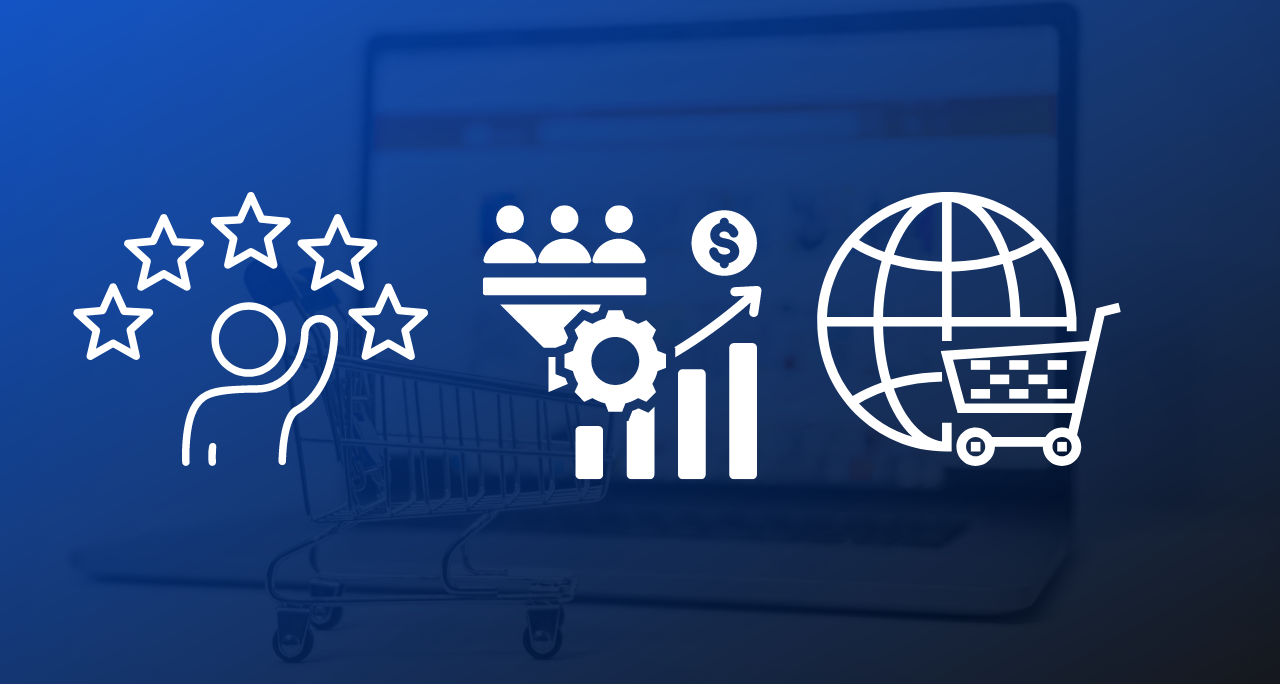Imagine walking into a supermarket, filling your cart with all your favorite items, and then abandoning it at the checkout line. Sounds unusual, right? Yet, in the digital world, this happens more often than you’d think.
In fact, according to a study by Baymard Institute, the average online shopping cart abandonment rate is nearly 70% – that’s leaving a lot of money on the table for businesses not constantly optimizing their eCommerce shopping cart experience.
Think of the shopping cart as the final destination for a customer in your eCommerce journey – they either decide to complete the purchase or jump ship.
In this article, we will provide a comprehensive overview of various shopping cart optimization strategies to help transform your digital checkout into a conversion powerhouse.
Understanding Key Performance Metrics (KPI)

Learning how to analyze and use your data to push your business forward is a must in 2023. Think of your data as the compass that guides your eCommerce ship – it’s the key that unlocks a deeper insight into your customers, their behaviors, and their needs.
All vital factors that contribute to long-term business success. If you’re unsure of which metrics to start with, below are three must-haves to help establish your baseline:
- Cart Conversion Rate: Orders divided by unique visitors to the cart
- Revenue per Visitor: Revenue divided by unique visitors to the cart
- Average Order Value: Revenue divided by the number of orders
Actionable Takeaway: Define your three KPI inside separate tables segmented by your target audience and their geographical location. This is your baseline that you can begin improving upon.
Shopping Cart Optimization Tips
Having established your baseline metrics, it’s time to get to work.
The checkout process begins when a customer, having spent time selecting their desired items, is ready to finalize their purchase. If the checkout process is complicated, they may leave without completing their purchase.
Here are some tactics to consider to reduce the likelihood of that happening.
Best Practices To Increase Conversion Rates
The following are ways to get ahead of competitors and improve your customer shopping experience.
Use a Clear Call-To-Action (CTA)
A call to action is like a signpost guiding your customers toward the checkout – the prompt that tells the customer what to do next.
Each part of your purchase funnel should contain one stand-out CTA.
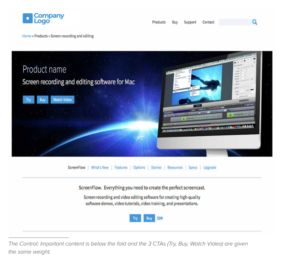
Here are a few things to consider:
–Avoid boring copy
–Highlight important elements with accent colors
–Use lots of white space not to overwhelm users’ attention.
Take, for example, the following image. The landing page is cluttered with three call-to-action buttons, all colored blue. Nothing here helps customers understand which one they should press first – the signpost is confusing to read.
The below example helps navigate the user by highlighting their primary call-to-action button. Here, the signpost clearly points to a direction that is easy to follow.
This simple implementation has helped businesses increase their conversion rates by upwards of 16%.
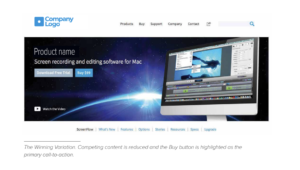
Use Branding To Your Advantage
Already, we can see the importance of what one color change and element reduction can do to help boost your eCommerce conversion. This ties into the next important concept in optimizing your shopping cart experience – keeping things consistent.
Bonus: Learn more on how to maximize your conversion rates by optimizing our own purchase funnel by downloading this FREE eBook.
Consistency is key. Your logo, header, footer, background, checkout form, and button styles should all sing the same tune. This harmony helps creates a sense of trust and familiarity between your brand and customers.
As Seth Godin famously said, “A brand is the set of expectations, memories, stories, and relationships that, taken together, account for a consumer’s decision to choose one product or service over another.”
Remember, you define your eCommerce brand, and you decide how it will be seen and remembered. So, even as the eCommerce market continues to grow and oversaturate, you are in control of the ship.
The Importance of Custom Domains
Your URL isn’t just a string of text; it’s a roadmap for Google’s crawling bots. Every once in a while, Google will “crawl” your website and make your pages public on search results.
Here are additional ways to improve your Google ranking results:
–Own an SSL
–Write Semantic URLs
–Use sub-domains (i.e., blog.example.com”)
Why Localizing Your eCommerce Store Matters

If you sell internationally, then ensuring a strong customer segmentation strategy is a must. Localize your brand to your customer’s location – this will provide a nice, tailored touch to the shopping experience. Localization involves offering the product in the language, price, and currency that is specific to a shopper’s country.
Support Several Payment Methods
Pricing is a crucial element to the success of your eCommerce store; as such, ensure your shopping cart supports all local payment methods, including digital wallets.
Display Total Cost Clearly
Never use hidden fees – make sure to display all expected charges clearly, including sales tax and specify if the cost is a one-time fee, or monthly/annual subscription.
Use Intuitive Navigation
A well-designed navigation system is crucial for helping customers find their needs. It can make the difference between a smooth, efficient experience and a frustrating one.
The following are must-haves to help increase your shopping cart conversion rates.
Optimize For Mobile
The shopping experience for a customer should be optimized for a desktop or mobile device. Keep things consistent and simple by utilizing responsive design.
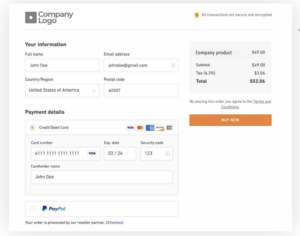
Use an Open/Sticky Cart
Make it easy to access the shopping cart on your website. Customers don’t always check out right away; sometimes, they leave the site or continue browsing. Providing them with a clear way to return back to their cart will improve the shopping experience.
Identify New and Returning Shoppers
Your eCommerce store must track its data; otherwise, you’re shooting in the dark and won’t know which strategy is working and which isn’t. Beyond that, identifying “returning customers” can create a smoother shopping experience by prefilling contact information on the Checkout page or offering special discounts.
Use Clear Error Labels
Clear error messages can guide customers to the successful resolution of the problem.
Ensure your error messages:
- Instantly display upon a user or server mistake
- Are clearly visible
- Provide a helpful error message in context
Streamline Forms
Nobody wants to fill out a hundred form fields. Stick with the essential details only; customer details, payment information, shipping address, and an order summary.
Include Trust Marks and Visual Cues
Use logos of popular payment providers and security certificates to build confidence in the checkout process.
Create a Smooth Refund Policy
Offering a ‘Satisfaction Guarantee‘ or ’30-Day Money Back Guarantee’ can help to remove any lingering doubts in your customers’ minds.
Show Support For Your Customers
If your customer is having an issue, the last thing you want is for them to get more frustrated searching for your customer support information. Display the email, phone number, and live chat options to help reach your customer support team.
Social Proof

There are many tactics on how to sell something, but the tried-and-true method of showcasing the reviews of other customers remains at the top of the list. Display customer testimonials, likes, downloads, and 3rd party logos to build credibility and trust between your brand and customers.
Terms & Conditions
This is non-negotiable. For legal reasons, you must include terms and conditions, including renewal terms if you are selling a subscription product.
Usability and Performance
Treat your website as your car; it needs daily maintenance to keep performing well. According to a study by Akamai, a 100-millisecond delay in website load time can hurt conversion rates by 7%.
Recap on Best Practices To Increase Conversion Rates

Implementing these best practices can dramatically enhance your conversion rates. The ultimate goal is to create a frictionless, enjoyable shopping experience that smoothly guides the customer from browsing to checkout.
Remember, a well-optimized shopping cart is like a well-oiled machine, efficiently converting visitors into customers.
You can read a more detailed breakdown of eCommerce Shopping Cart Optimization Tips by checking out our eBook.
Best Practices To Decrease Shopping Cart Abandonments
Shopping cart abandonment is a common problem for eCommerce stores, but implementing the following strategies can help reduce its occurrence.
Save Previously Entered Info
Going back to the importance of segmenting returning and unique customers – retaining and prefilling customers’ information during the ordering process will significantly improve their shopping experience and satisfaction.
Use Coupon Codes Mindfully

According to an eCommerce study by VWO, nearly 25% of online shoppers abandon their cart searching for coupon codes. Avoid overemphasizing coupon discounts or highlighting the coupon field.
Catch Shoppers Before They Leave
Implement exit offers and exit surveys to engage customers before they leave your site. This can provide invaluable insights for future optimization. For example, an exit offer could be a 10% discount or a money-back guarantee, providing an extra incentive for the customer to complete their purchase.
Recover Payment Processing Errors
Provide a helpful message that lets the user know exactly what the issue is and how they can solve it. Clarification is key to a smooth payment process.
Leverage Follow-Up Campaigns
A well-crafted remarketing campaign can help recover abandoned carts. Use an email sequence, personalized data, and provide an incentive for the customer to return.
Best Practices To Increase Average Order Value (AOV)
Boosting your Average Order Value (AOV) is a powerful strategy to enhance your business revenue. Using practices such as cross-Selling, up-Selling, and bundle packages will result in better product recommendations and incentivize customers to spend more.
In the SaaS world, while Customer Lifetime Value (CLV) is the primary focus, AOV is crucial during the acquisition stage. The challenge lies in converting trial users into paying customers, which can be achieved through effective messaging, cart optimization, and a clear presentation of offers.
For a deeper understanding of these strategies, check out our eBook on shopping cart best practices.
The Importance of Testing
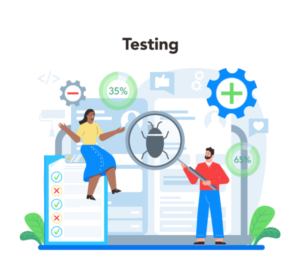
Testing is absolutely crucial for eCommerce stores as it provides necessary insight into the actions, behaviors, and preferences of your customers. Beyond that, testing can:
–Give your business a competitive edge
–Improve user experience
–Increase conversion rates
–Reduce cart abandonment
–Provide a personalized touch
As the adage goes, “knowledge is power.”
Treat testing as your compass in the eCommerce landscape, guiding optimization, enhancing user experience, and boosting conversion rates.
Wrapping Up
And there you have it. We’ve reached the end of our journey on optimizing your shopping cart experience.
So, what comes next?
Try going through the above strategies and implementing them. Over time, you will begin to create a smoother online shopping checkout process that can increase your profits, improve cart abandonment and provide a satisfying shopping experience for your shoppers.
If you want to dive deeper into it and keep exploring, set your sail to our eBook on shopping cart best practices.

